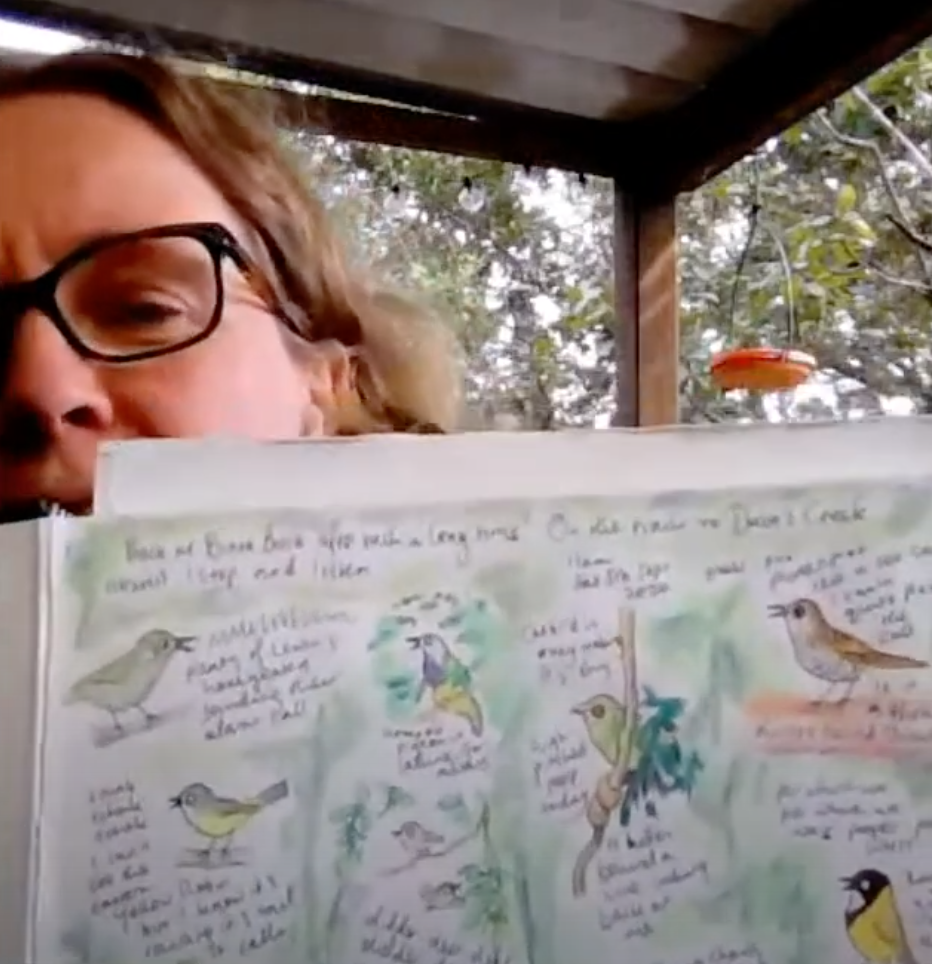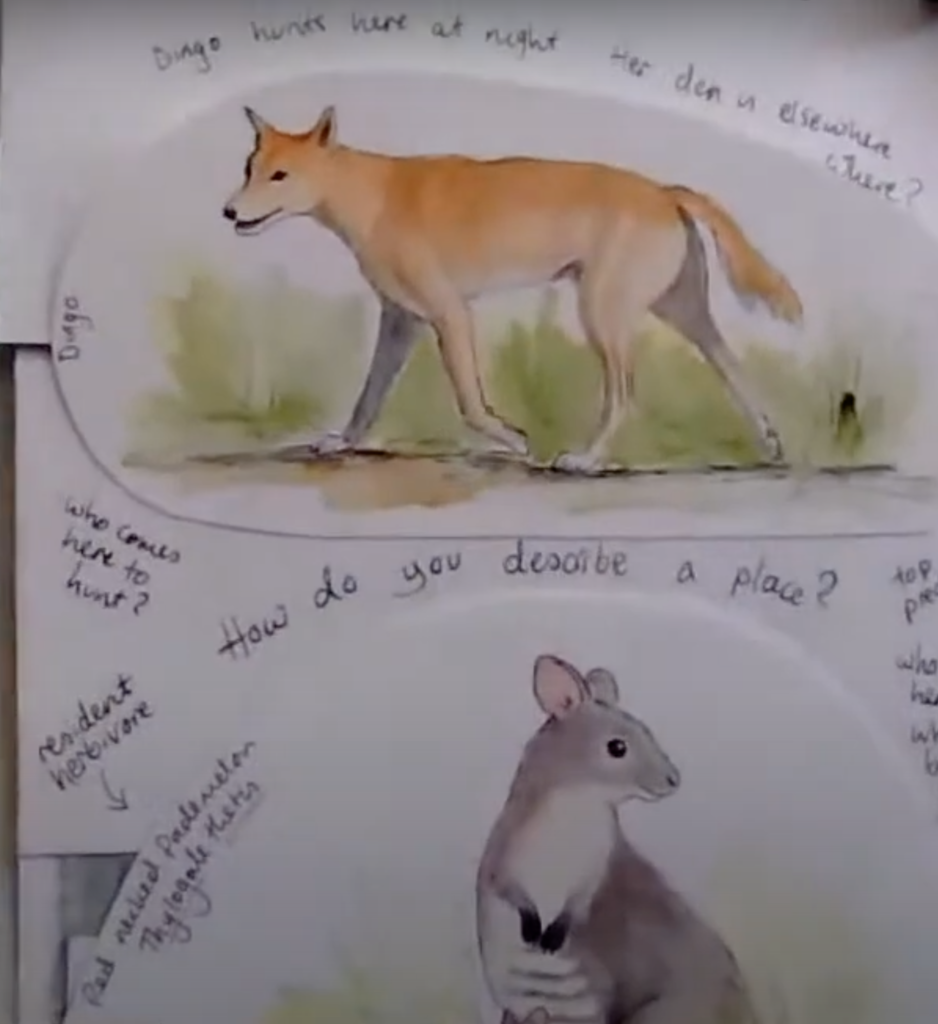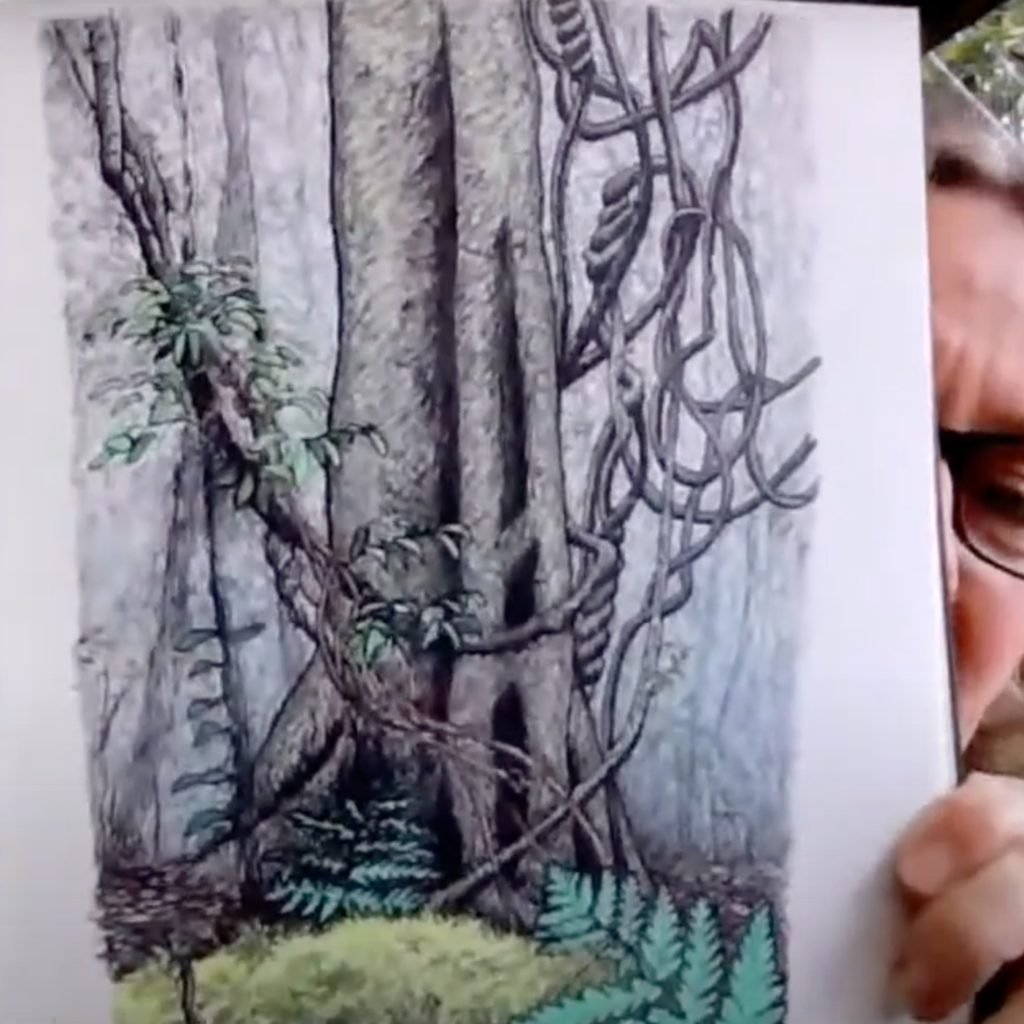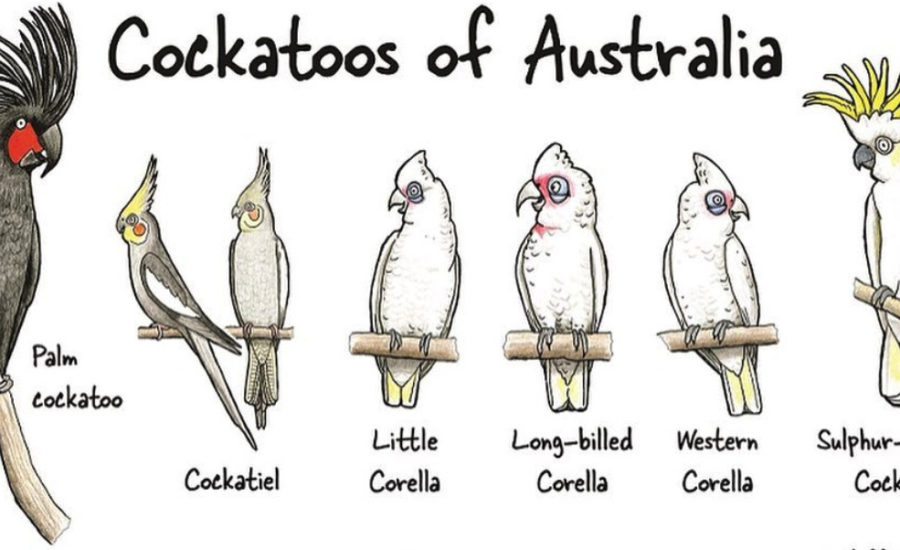What makes nature journaling in Australia so different from everywhere else? Find out from Paula Peeters, a nature journaler, teacher, writer, scientist, and conservationist from Australia. In this episode of the Nature Journal Show, Marley interviews Paula about her books, different ways of describing a place, the ideal nature journal outing, resources for Aussie nature journalers, and what makes nature journaling Australia so special.
How do you describe a place?
If you’re Paula Peeters, you use a diversity of different ways to describe a place. Sometimes she goes for in-depth drawings that focus on details and take time to complete. Other times, Paula might opt for a cartoon – it’s easier to capture details quickly when you’re cartooning. Both approaches are very useful, depending on what Paula is after in her nature journaling session.

A particularly ingenious way of describing the complexity of a place is with a “folding forest” – Paula creates pages with lifting flaps and expanding backgrounds, so you can see what’s going on in the skies above and the earth below a particular ecosystem. Using such a variety of ways to show information can help deepen your understanding of that place, as well as the nature journaling experience itself.
To help other people engage in the places she cares about, Paula also writes books. Some are books to help people get outside more, such as Take This Book for a Walk and Make a Date With Nature. Others are coloring books of different habitats and the species living in them – some of which are threatened. By allowing the reader/colorer to go on an adventure in her books, Paula gives them an emotional investment into the wellbeing of these places.

What is different about the nature journaling experience in Australia?
Nature journal clubs have been growing all over Australia. Marley asks Paula why she thinks Australia is nature journaling so much. Here are three possible factors, according to Paula:
- In Australia, you can go outside most of the year. The winters are not so severe – there is seldom snow, for example.
- There is extraordinary nature in Australia. The trees are largely evergreen – there are over 800 different species of Eucalyptus alone! – and there is a diversity of certain animals you would not be able to find anywhere else in the world. Paula is quick to point out that there are not huge predatory animals, unlike in North America – though Australia is home to many poisonous and venomous animals!
- Related to the last point: there are large parts of Australia that are still unchanged from when the European settlers first came, about 200 years ago. This means that there might be intact ecosystems and wild spaces, places to explore in an increasingly urbanized world.

Adding to INIWIRMO
One of the core tools in nature journaling is observation, and there is a commonly used three-pronged prompt that can help facilitate that process: “I Notice”, “I Wonder”, and “It Reminds Me Of”, or INIWIRMO for short. Paula adds one more prompt when she is sharing this activity with her students: “How does it (make me) feel?” (So would that be INIWIRMOHDIF?) Anyone can follow these prompts:
- First, write down what you notice in the environment around you. This can be things to do with the 5 senses (sight, sound, smell, touch, and taste), or the different species you see, or different behaviors you observe, or other things that are around you. Caution: try to refrain from making assumptions about what you’re seeing. You might observe
- Next, write down questions that came up for you while you were observing the environment. You can write down question chains, where one inquiry leads to another, which leads to more. You don’t have to actually answer any of these questions! For now, let the curiosity flow.
- Then, write down any connections you’ve made. Perhaps you’re watching an eddy in a river, and it reminds you of water going down the drain in your bathtub – write that down! Regularly making connections between seemingly unrelated things improves our creativity and changes our thinking. Plus, by making a comparison of something you see in nature to something that is very familiar to you, you will remember it better, and it might just give you more questions AND more answers!
- Finally, write down how you’re feeling about what you’ve been experiencing so far. When we connect to things personally, we remember them better; so remembering how something personally made us feel then attaches an emotion to that experience. Paula strongly believes (and we agree!) that nature journaling can promote health and wellness. And by caring for ourselves in nature, we can also learn to care for nature.
There are so many lessons we can learn from Paula! Her greatest passion, as a teacher, writer, and scientist, is to connect people with the natural world in as many ways as possible. We save what we care about; to get people to invest in conservation long-term, we must help each other to experience nature firsthand. Let’s follow Paula’s example.
To see more of Paula’s work and resources (including her downloadable coloring books!) please visit her website: https://www.paperbarkwriter.com
Want to see an interview with another Australian nature journaler? Check out Marley’s interview with Dion Dior here.
There are several nature journaling clubs in Australia! Check them out:
Nature journaling Australia: https://www.facebook.com/groups/NatureJournalingAustralia
Brisbane Nature Journal Club: https://www.facebook.com/groups/379012613071527 and https://www.journalingwithnature.com/brisbane-nature-journal-club
Noosa & Sunshine Coast Nature Journal Club: https://www.facebook.com/groups/4007241289308006
Nature Journal Adventures: https://www.facebook.com/groups/582915913094715
Melbourne Nature Journal Club: https://www.amydiana.co/workshops
Newcastle Nature Journaling Club: https://www.henriettamooney.com/newcastle-nature-journaling-club-1
Gold Coast Nature Journal Group: https://www.paperbarkwriter.com/nature-journal-group/?fbclid=IwAR34AEw0R6pEhPgr21UirLCxfdb9jYKABqNjjWIX0Fz3XwsMdaLpzWiorVs
Nature Journal Club of Canberra and Queanbeyan: https://www.facebook.com/groups/natureclubcanberra/
Just getting started with nature journaling?
Need more tips? If so, check out this post. It will walk you through how to nature journal in 10 steps.
Need help choosing nature journaling supplies? Check out Nature Journaling Supplies: What You Need and What You Do Not

One Response
Also a Perth club now!
https://www.kims-njadventures.com/perth-nj-club/